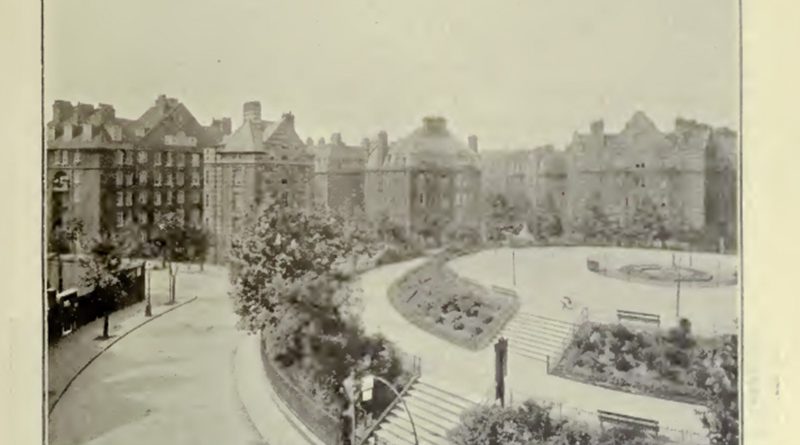Five local history and heritage sites you shouldn’t miss in Bethnal Green
From London’s first housing estate to a building spanning three religions, we’ve picked the best historic sites to visit in Bethnal Green
Bethnal Green is full of landmarks where the area’s history is still visible – if you know where to look. Here’s a tour of some of the East End’s most fascinating historical sites, each with a story that helps explain how the neighbourhood came to be what it is today.
Boundary Estate & Laundrette
Built between 1890 and 1900, the Boundary Estate is known as London’s first social housing estate. It was constructed on the site of the Old Nichol slum, which was infamous for overcrowding, poverty, and crime. Its demolition and replacement with this model community marked a new era of municipal housing.
The estate was designed around Arnold Circus, with its bandstand at the centre and red-brick tenement blocks radiating outward. As well as housing, the project included schools, workshops, and communal facilities such as laundries and washhouses – one of which still operates today, serving residents for more than a century. Its distinctive arched entrances, courtyards, and decorative brickwork have made it a blueprint for future social housing developments.
Oxford House
Oxford House was founded in 1884 as one of the UK’s first “settlement houses,” places where university graduates lived and worked alongside the working-class communities they served. Its mission was to provide social and educational opportunities in one of London’s most deprived areas.
From its earliest days, Oxford House ran clubs, classes, and social events, while also offering practical support for residents. During both World Wars, it became a vital hub, and its programmes helped generations of Bethnal Green families access opportunities and skills. Today, Oxford House remains a thriving arts and community centre, hosting exhibitions, performances, and events that carry forward its founding goal: to strengthen community life.
Dennis Severs’ House
Though technically in Spitalfields, Dennis Severs’ House is one of the area’s most distinctive historic experiences. Created by artist Dennis Severs, the house is kept as if its Huguenot silk-weaver inhabitants have just stepped out of the room.
Each room is dressed to a different historical period, from the 18th to the early 20th century, with sights, smells, and sounds designed to immerse visitors in the past. Rather than traditional museum-style interpretation, Severs wanted the house to be a kind of “still-life drama,” encouraging visitors to imagine the lives of those who lived there. It is a rare opportunity to experience the domestic history of the East End in such an intimate, atmospheric way.
Brick Lane Jamme Masjid & Sundial
The Brick Lane Jamme Masjid has served as a church, synagogue, and now a mosque – a reflection of successive waves of migration to the East End. Its 1743 sundial, bearing the Latin motto Umbra Sumus (“We Are Shadows”), remains mounted high on its facade, a reminder of the passage of time and the changing character of the area.
First built as La Neuve Eglise by Huguenot refugees fleeing persecution in France, the building later became the Great Synagogue for Jewish migrants escaping pogroms in the Russian Empire. In 1976, the Sylheti community of East Bengal purchased the site, transforming it into the London Jamme Masjid, or Great Mosque. Its steel minaret now stands over Brick Lane, marking the area as the heart of Bangladeshi life in London while standing witness to centuries of faith, migration, and change.
Mildmay Mission Hospital
Founded in 1866 during a cholera outbreak, Mildmay Mission Hospital has been at the forefront of public health in the East End for more than 150 years. Its history includes pioneering work with HIV and AIDS patients in the 1980s, when it was one of the first hospitals in the UK to offer specialist care for those affected by the crisis.
The hospital’s origins lie with William and Catherine Pennefather, whose Mildmay Deaconesses entered some of the worst slums in London to offer medical and spiritual support. In 1892, a purpose-built hospital was opened on Austin Street, where it remained for over a century. It has survived closure threats, redevelopment, and evolving healthcare crises, adapting its services to meet new needs – from AIDS care to homelessness rehabilitation during the COVID-19 pandemic.
Today, Mildmay continues to operate as both an NHS and a charitable hospital, offering specialist care for people living with HIV and related neurological conditions. Its survival is a testament to the East End’s long tradition of grassroots activism and community campaigning.
Whether you’re exploring on foot or reading up from home, these sites are reminders that Bethnal Green’s history remains in its streets. Each tells a story of the area’s past – and how it keeps changing.
If you liked this, read Community Launderette reopens amidst gentrification concerns


Such a shame that so much of the Boundary Estate is now in a pitiful state of repair yet leasehold flats change hand at high prices. Could be a model estate but unfortunately just isn’t.